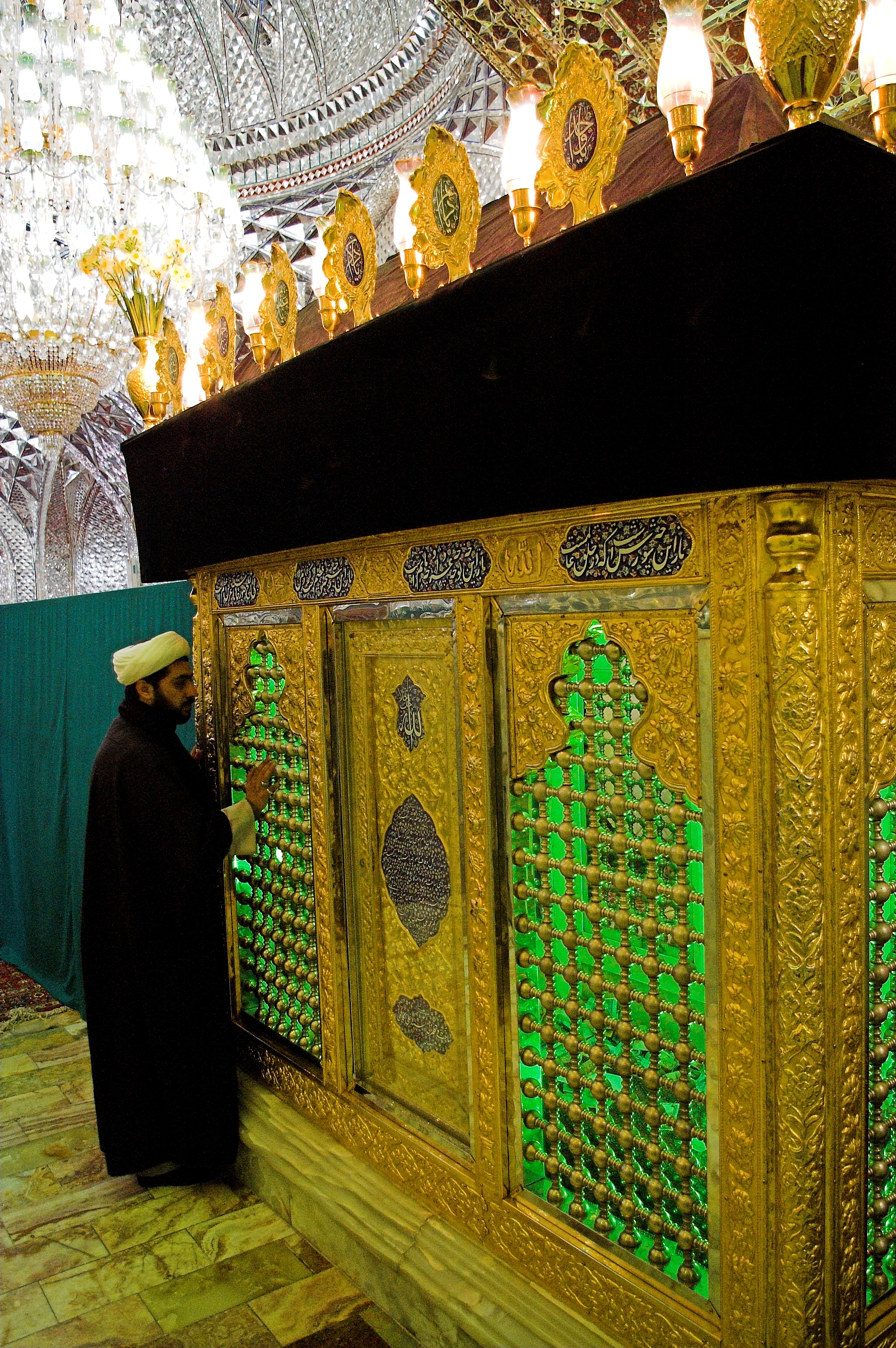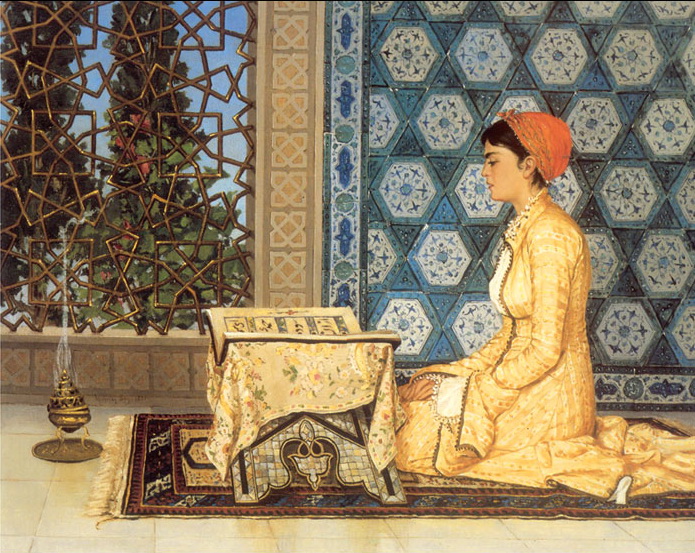|
Otin
Otines refer to the female Muslim religious scholars in Central Asia. They were regarded as the guardian of the Islamic faith in the era of Soviet Union. Otines are recognised as leaders in the local community. Their position has a high status, somewhat similar to a mullah's, and certain otines are officially recognized by their country's Muslim board. Otines also serve as teachers at religious schools for girls. References Further reading * Fathi, Habiba. (March 1997). "Otines: The unknown women clerics of Central Asian Islam". ''Central Asian Survey ''Central Asian Survey'' is an academic journal first published in 1982 concerning Caucasus and Central Asian studies. It is published by Taylor & Francis, and has four issues a year. According to the editorial staff, "The central aim of the journ ...'' 16 (1): 27-43. Central Asia Islamic honorifics Islam and women Female religious leaders Female Islamic religious leaders {{CAsia-stub ... [...More Info...] [...Related Items...] OR: [Wikipedia] [Google] [Baidu] |
Muslim
Muslims ( ar, المسلمون, , ) are people who adhere to Islam, a monotheistic religion belonging to the Abrahamic tradition. They consider the Quran, the foundational religious text of Islam, to be the verbatim word of the God of Abraham (or '' Allah'') as it was revealed to Muhammad, the main Islamic prophet. The majority of Muslims also follow the teachings and practices of Muhammad ('' sunnah'') as recorded in traditional accounts (''hadith''). With an estimated population of almost 1.9 billion followers as of 2020 year estimation, Muslims comprise more than 24.9% of the world's total population. In descending order, the percentage of people who identify as Muslims on each continental landmass stands at: 45% of Africa, 25% of Asia and Oceania (collectively), 6% of Europe, and 1% of the Americas. Additionally, in subdivided geographical regions, the figure stands at: 91% of the Middle East–North Africa, 90% of Central Asia, 65% of the Caucasus, 42% of Southeast As ... [...More Info...] [...Related Items...] OR: [Wikipedia] [Google] [Baidu] |
Central Asia
Central Asia, also known as Middle Asia, is a subregion, region of Asia that stretches from the Caspian Sea in the west to western China and Mongolia in the east, and from Afghanistan and Iran in the south to Russia in the north. It includes the former Soviet Union, Soviet republics of the Soviet Union, republics of Kazakhstan, Kyrgyzstan, Tajikistan, Turkmenistan, and Uzbekistan, which are colloquially referred to as the "-stans" as the countries all have names ending with the Persian language, Persian suffix "-stan", meaning "land of". The current geographical location of Central Asia was formerly part of the historic region of Turkestan, Turkistan, also known as Turan. In the pre-Islamic and early Islamic eras ( and earlier) Central Asia was inhabited predominantly by Iranian peoples, populated by Eastern Iranian languages, Eastern Iranian-speaking Bactrians, Sogdians, Khwarezmian language, Chorasmians and the semi-nomadic Scythians and Dahae. After expansion by Turkic peop ... [...More Info...] [...Related Items...] OR: [Wikipedia] [Google] [Baidu] |
Islamic Faith
Faith, derived from Latin ''fides'' and Old French ''feid'', is confidence or trust in a person, thing, or In the context of religion, one can define faith as "belief in God or in the doctrines or teachings of religion". Religious people often think of faith as confidence based on a perceived degree of warrant, or evidence while others who are more skeptical of religion tend to think of faith as simply belief without evidence.Russell, Bertrand"Will Religious Faith Cure Our Troubles?" ''Human Society in Ethics and Politics''. Ch 7. Pt 2. Retrieved 16 August 2009. Etymology The English word ''faith'' is thought to date from 1200 to 1250, from the Middle English ''feith'', via Anglo-French ''fed'', Old French ''feid'', ''feit'' from Latin ''fidem'', accusative of ''fidēs'' (trust), akin to ''fīdere'' (to trust). Stages of faith development James W. Fowler (1940–2015) proposes a series of stages of faith-development (or spiritual development) across the human lifespan ... [...More Info...] [...Related Items...] OR: [Wikipedia] [Google] [Baidu] |
Soviet Union
The Soviet Union,. officially the Union of Soviet Socialist Republics. (USSR),. was a transcontinental country that spanned much of Eurasia from 1922 to 1991. A flagship communist state, it was nominally a federal union of fifteen national republics; in practice, both its government and its economy were highly centralized until its final years. It was a one-party state governed by the Communist Party of the Soviet Union, with the city of Moscow serving as its capital as well as that of its largest and most populous republic: the Russian SFSR. Other major cities included Leningrad (Russian SFSR), Kiev (Ukrainian SSR), Minsk ( Byelorussian SSR), Tashkent (Uzbek SSR), Alma-Ata (Kazakh SSR), and Novosibirsk (Russian SFSR). It was the largest country in the world, covering over and spanning eleven time zones. The country's roots lay in the October Revolution of 1917, when the Bolsheviks, under the leadership of Vladimir Lenin, overthrew the Russian Provisional Government ... [...More Info...] [...Related Items...] OR: [Wikipedia] [Google] [Baidu] |
Mullah
Mullah (; ) is an honorific title for Shia and Sunni Muslim clergy or a Muslim mosque leader. The term is also sometimes used for a person who has higher education in Islamic theology and sharia law. The title has also been used in some Mizrahi and Sephardic Jewish communities to refer to the community's leadership, especially religious leadership. Etymology The word ''mullah'' is derived from the Arabic word ''mawlā'' ( ar, مَوْلَى), meaning "vicar", "master" and "guardian". Usage Historical usage The term has also been used among Persian Jews, Bukharan Jews, Afghan Jews, and other Central Asian Jews to refer to the community's religious and/or secular leadership. In Kaifeng, China, the historic Chinese Jews who managed the synagogue were called "mullahs". Modern usage It is the term commonly used for village or neighborhood mosque leaders, who may not have high levels of religious education, in large parts of the Muslim world, particularly Iran, Turkey, ... [...More Info...] [...Related Items...] OR: [Wikipedia] [Google] [Baidu] |
Madrasah
Madrasa (, also , ; Arabic: مدرسة , pl. , ) is the Arabic word for any type of educational institution, secular or religious (of any religion), whether for elementary instruction or higher learning. The word is variously transliterated ''Madrasah arifah'', ''medresa'', ''madrassa'', ''madraza'', ''medrese'', etc. In countries outside the Arab world, the word usually refers to a specific type of religious school or college for the study of the religion of Islam, though this may not be the only subject studied. In an architectural and historical context, the term generally refers to a particular kind of institution in the historic Muslim world which primarily taught Islamic law and jurisprudence (''fiqh''), as well as other subjects on occasion. The origin of this type of institution is widely credited to Nizam al-Mulk, a vizier under the Seljuks in the 11th century, who was responsible for building the first network of official madrasas in Iran, Mesopotamia, and Khorasan. ... [...More Info...] [...Related Items...] OR: [Wikipedia] [Google] [Baidu] |
Central Asian Survey
''Central Asian Survey'' is an academic journal first published in 1982 concerning Caucasus and Central Asian studies. It is published by Taylor & Francis, and has four issues a year. According to the editorial staff, "The central aim of the journal is to reflect and promote advances in area-based scholarship in the social sciences and humanities and enhance understanding of processes of local and regional change that make Central Asia and the Caucasus an area of significant contemporary interest."The editor is Rico Isaacs, the associate editor is Alexander Morrison and the book editor is Russell Zanca. Deniz Kandiyoti is the Editor Emeritus. Other scholars serving on the editorial board include Alexander Cooley Alexander A. Cooley is an American political scientist. He is Claire Tow Professor at Barnard College. He served as the 15th director of the Harriman Institute of Columbia University and is currently the Vice Provost for Research, Libraries and A ..., Nargis Kassenova, Er ... [...More Info...] [...Related Items...] OR: [Wikipedia] [Google] [Baidu] |
Islamic Honorifics
Islam uses a number of conventionally complimentary phrases praising Allah (e.g., ), or wishing good things upon Muhammad or other prophets (e.g., ). These phrases are encompassed by a number of terms: Prayers upon Muhammad may be referred to simply as ar, صَلَوات, ṣalawāt, "prayers", fa, , dorud, "greetings", or ur, , durūd. Applied to God After mentioning one of the names of God, such as ''Allah'', an expression of worship is used as opposed to the phrases of supplication used for regular individuals. These include: Applied to Muhammad and his family In the above, ar, عليه, ʿalayhi "upon him" may be replaced by ar, عليه وعلى آله, ʿalayhi wa-ʿalā 'ālihi "upon him and upon his family." Usually, or "blessings" is used exclusively for Muhammad to distinguish between him and other prophets (and Imams in Shia Islam), but theoretically, it is used for all prophets equally. Scriptural and hadith basis for prayers upon Muhammad Qur'ān Th ... [...More Info...] [...Related Items...] OR: [Wikipedia] [Google] [Baidu] |
Islam And Women
The experiences of Muslim women ( ''Muslimāt'', singular مسلمة ''Muslimah'') vary widely between and within different societies. At the same time, their adherence to Islam is a shared factor that affects their lives to a varying degree and gives them a common identity that may serve to bridge the wide cultural, social, and economic differences between them. Many women are mentioned in the Quran, but only one is named: Mary, who appears more times in the Quran than in the Bible. According to the Quran, divine grace surrounded Mary from birth, and, as a young woman, she received a message from God through the archangel Gabriel that God had chosen her, purified her and preferred her above all "the women of the worlds".Stowasser, Barbara Freyer, "Mary", in: ''Encyclopaedia of the Qurʾān'', General Editor: Jane Dammen McAuliffe, Georgetown University, Washington DC. Among the influences which have played an important role in defining the social, legal, spiritual, and cosmol ... [...More Info...] [...Related Items...] OR: [Wikipedia] [Google] [Baidu] |
Female Religious Leaders
Female (symbol: ♀) is the sex of an organism that produces the large non-motile ova (egg cells), the type of gamete (sex cell) that fuses with the male gamete during sexual reproduction. A female has larger gametes than a male. Females and males are results of the anisogamous reproduction system, wherein gametes are of different sizes, unlike isogamy where they are the same size. The exact mechanism of female gamete evolution remains unknown. In species that have males and females, sex-determination may be based on either sex chromosomes, or environmental conditions. Most female mammals, including female humans, have two X chromosomes. Female characteristics vary between different species with some species having pronounced secondary female sex characteristics, such as the presence of pronounced mammary glands in mammals. In humans, the word ''female'' can also be used to refer to gender in the social sense of gender role or gender identity. Etymology and usage The ... [...More Info...] [...Related Items...] OR: [Wikipedia] [Google] [Baidu] |

.png)


